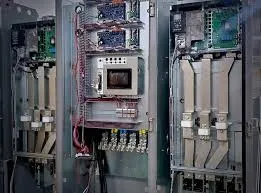Understanding EPDM and Butyl Tape A Comprehensive Guide
When it comes to sealing and weatherproofing applications, EPDM (ethylene propylene diene monomer) and butyl tape are two popular materials often utilized in various industries. Their unique properties make them ideal for a wide range of applications, from roofing to automotive components. This article will explore the properties, uses, and benefits of EPDM butyl tape, focusing on why it is a preferred choice for many professionals.
What is EPDM?
EPDM is a type of synthetic rubber that is known for its excellent resistance to weathering, ozone, and UV radiation. This makes it an ideal material for outdoor applications and environments that experience extreme temperatures. EPDM is often used in roofing membranes, seals, and gaskets. Its elasticity and flexibility allow it to be stretched without breaking, which is essential for applications where movement occurs.
What is Butyl Tape?
Butyl tape is an adhesive tape made from butyl rubber, a polymer that exhibits exceptional adhesion and sealing properties. It is primarily known for its waterproof characteristics and is often used in construction and automotive industries. Butyl tape sticks well to a variety of surfaces, including metals, plastics, and fabrics, making it a versatile choice for many applications.
The Combination EPDM Butyl Tape
EPDM butyl tape combines the advantages of both materials, resulting in a highly effective sealing solution. This tape features a sturdy backing of EPDM rubber and is coated with a layer of butyl adhesive. This unique construction provides excellent adhesion along with superior weather resistance. As a result, EPDM butyl tape is an ideal solution for sealing joints, seams, and gaps in various settings.
Key Applications
1. Roofing One of the most common uses of EPDM butyl tape is in roofing systems. The tape effectively seals roof seams and penetrations, preventing water from leaking into the structure. It is especially popular in flat roofing applications, where water pooling can be a concern.
2. Automotive In the automotive industry, EPDM butyl tape is used to seal components such as windows, lights, and panels. Its ability to withstand extreme temperature variations makes it suitable for use in vehicles.
epdm butyl tape

3. HVAC Systems EPDM butyl tape is also used in heating, ventilation, and air conditioning (HVAC) systems to seal ducts and prevent air leaks, contributing to energy efficiency.
4. Construction In the construction industry, the tape is utilized for sealing joints between different building materials, ensuring that they are weather-tight and secure.
Benefits of EPDM Butyl Tape
1. Durability The combination of EPDM rubber and butyl adhesive results in a product that offers long-lasting performance, resisting degradation caused by UV rays, moisture, and temperature fluctuations.
2. Easy Application EPDM butyl tape can be easily applied by simply peeling off the backing and sticking it to a clean surface. This convenience reduces labor time and costs.
3. Versatility This tape is compatible with a wide range of materials, enabling its use in diverse applications across different industries.
4. Excellent Sealing Properties Thanks to the butyl adhesive, the tape provides a strong, waterproof seal that helps protect against moisture infiltration.
5. Flexibility and Elasticity The rubber composition allows the tape to maintain its integrity and flexibility even when subjected to movement or expansion, making it suitable for dynamic applications.
Conclusion
EPDM butyl tape is an exceptional sealing solution that combines the best properties of EPDM and butyl rubber. Its durability, versatility, and ease of use make it a preferred option across several industries. Whether used in roofing, automotive, HVAC, or construction applications, EPDM butyl tape offers reliable performance that stands the test of time. For anyone looking to ensure watertight seals and weatherproofing, this tape is undoubtedly a top contender.
-
XIANGFAN Rubber Tape-Ultimate Solutions for All Your Insulation NeedsNewsJun.24,2025
-
XIANGFAN Rubber Tape-Protection for Industrial and Residential ApplicationsNewsJun.24,2025
-
XIANGFAN Rubber Tape: Superior Safety and Sealing for Demanding EnvironmentsNewsJun.24,2025
-
XIANGFAN Rubber Tape: Reliable Solutions for Every Electrical ChallengeNewsJun.24,2025
-
XIANGFAN Electrical & Industrial Tape: Powering Reliability Across IndustriesNewsJun.24,2025
-
XIANGFAN Electrical & Industrial Tape: Excellence in Every ApplicationNewsJun.24,2025
